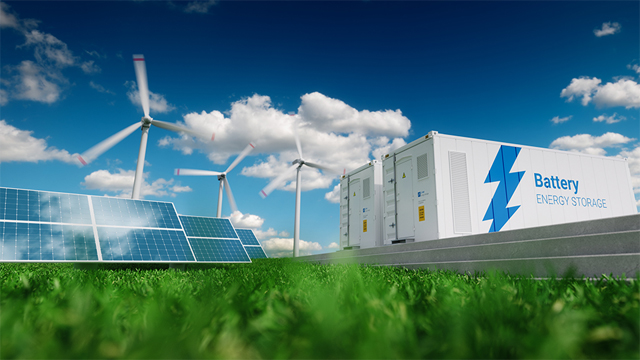
National Grid to accelerate up to 20GW of grid connections across its transmission and distribution networks
- Connection dates of 10GW of battery projects accelerated at transmission level, and 10GW of capacity unlocked at distribution level, both part of the Electricity System Operator (ESO)’s connections five-point plan.
- Battery energy storage projects connecting to the transmission network to be offered new connection dates averaging four years earlier than their current agreement.
- The accelerated 20GW equates to the capacity of six Hinkley Point C nuclear power stations.
- Work is part of ongoing collaborative industry efforts, together with Ofgem and government, to speed up and reform connections.
National Grid is accelerating the connection of up to 20GW of clean energy projects to its electricity transmission and distribution networks in England and Wales as part of ongoing collaborative work across industry.
On its transmission network, 19 battery energy storage projects worth around 10GW will be offered dates to plug in averaging four years earlier than their current agreement, based on a new approach which removes the need for non-essential engineering works prior to connecting storage.
The new policy is part of National Grid’s connections reform initiative targeting transmission capacity, spearheaded by the ESO – which owns the contractual relationship with connecting projects – and actioned jointly with National Grid Electricity Transmission (ET), the part of the business which designs and builds the transmission infrastructure needed in England and Wales to plug projects in.
On its distribution network in the Midlands, South West of England and South Wales, the additional 10GW of unlocked capacity announced recently is set to accelerate the connection of scores of low carbon technology projects, bringing forward some ‘shovel ready’ schemes by up to five years.
National Grid has already been in contact with more than 200 projects interested in fast tracking their distribution connection dates in the first wave of the capacity release, with 16 expressing an interest in connecting in the next 12 months and another 180 looking to connect within two to five years.
The accelerated 20GW equates to the capacity of six Hinkley Point C nuclear power stations and follows months of work and engagement with industry, Ofgem and government to find innovative solutions that will make plugging in clean energy projects faster and more flexible.
That includes collaborative action between Britain’s transmission and distribution networks – part of the Energy Networks Association (ENA)’s three-step plan for connections – to manage their technical interface more effectively to unlock gigawatts of capacity.
The new approach to transmission storage connections – a flagship policy in the ESO’s five-point plan to speed up connections – comes as National Grid ET undertakes an extensive review of projects in the connections pipeline in England and Wales to identify which can come forward based on new planning assumptions agreed with the ESO.
Traditionally National Grid carries out network reinforcements before a project plugs in – sometimes adding years to a connection – based on the assumption that batteries could charge at peak times and export when generation is high, exacerbating system peaks and constraints.
Following detailed technical analysis by electricity transmission engineers, National Grid will now offer selected battery projects a transmission connection before network reinforcements are made, on the agreement that the ESO can adjust the battery’s behaviour in certain operating conditions to reduce system impact.
A further tranche of clean energy projects – primarily batteries and hybrids (batteries co-located with wind or solar) – will be offered accelerated transmission connections as part of another phase anticipated in the new year, which could bring forward another 10GW.
Alice Delahunty, President of National Grid Electricity Transmission, said: “We’re committed to speeding up connections and creating a ‘fit for the future’ process for plugging projects into the grid.
“Bringing these battery projects forward is one of a range of actions that our electricity transmission business is delivering alongside the system operator and wider industry to unlock clean energy capacity in England and Wales.
“We’re really encouraged by the recognition these early joint steps by our industry are receiving. They’re paving the way for the more fundamental connections reform that we’re collectively working with government and the regulator to deliver to keep Britain on track for a secure, affordable and net zero energy system.”
Engineers from National Grid’s distribution business are also working through the potential for acceleration and will be contacting project owners individually to discuss next steps.
A second expression of interest is being rolled out to the next group of customers. Coupled with plans to replace the ‘first come, first served’ distribution connections process with a more dynamic ‘first ready, first connected’ approach developed through collaborative work with the ENA, this second wave will allow even more low carbon projects to connect faster, boosting the UK’s journey towards net zero.
Cordi O’Hara, President of National Grid Electricity Distribution, said: “We’re delighted that so many customers have already expressed an interest in taking advantage of this additional capacity to accelerate the connection dates for their low carbon technologies.
“But we’re not stopping there. Our second expression of interest will extend the offer to even more customers who will be able to benefit from our more agile approach to connections, enabling the UK to install the renewable generation needed to decarbonise the electricity system by 2035.”


